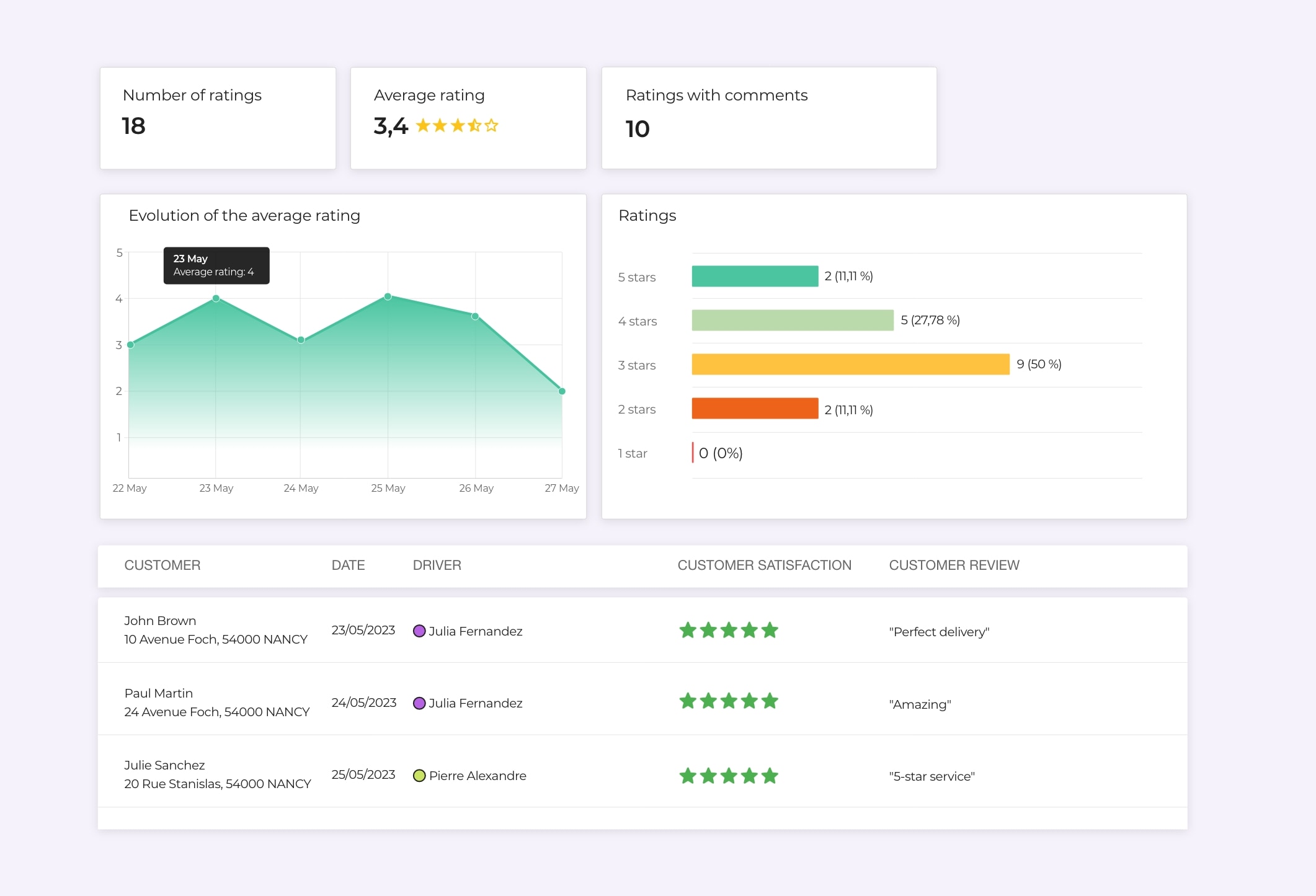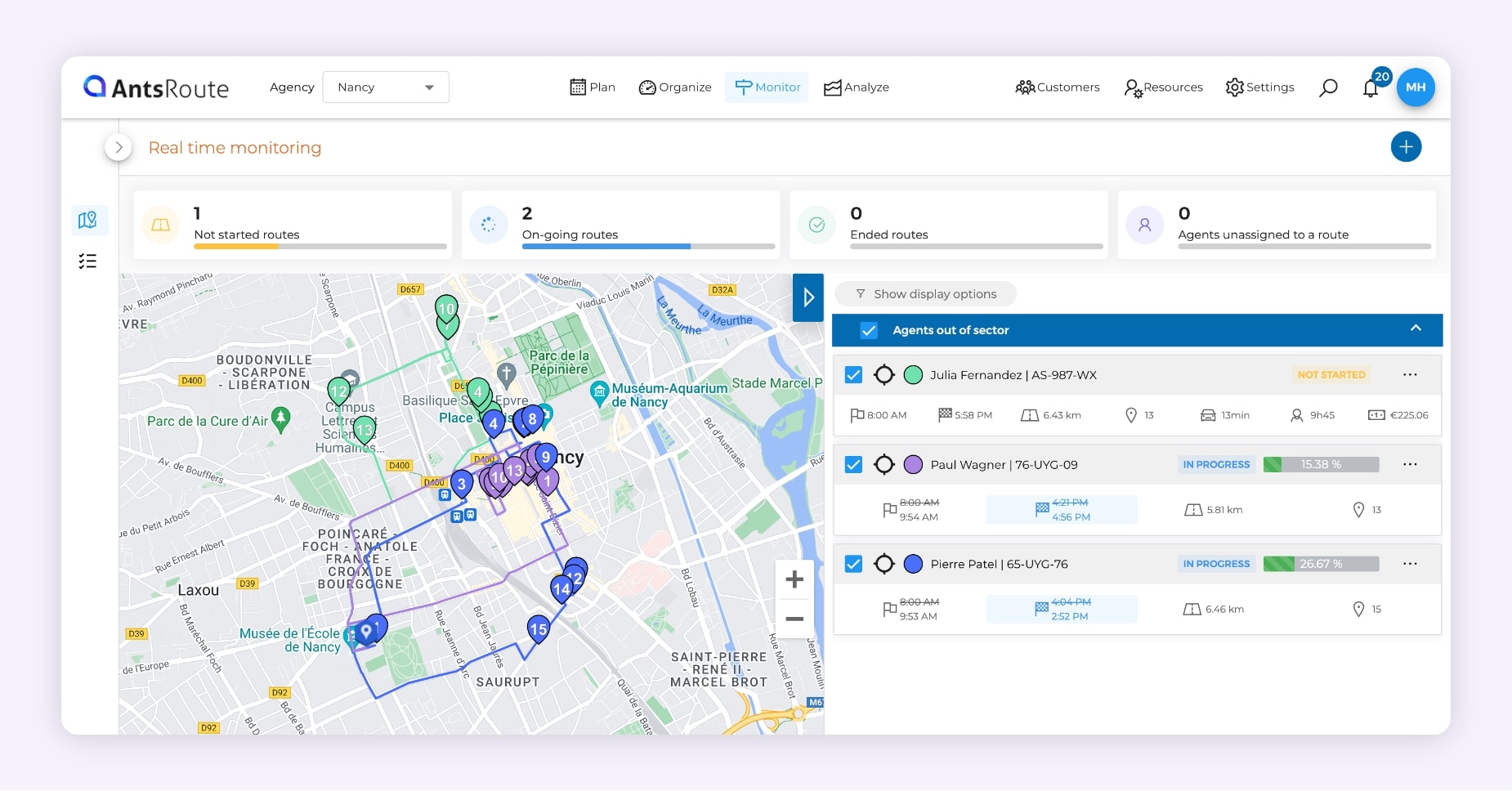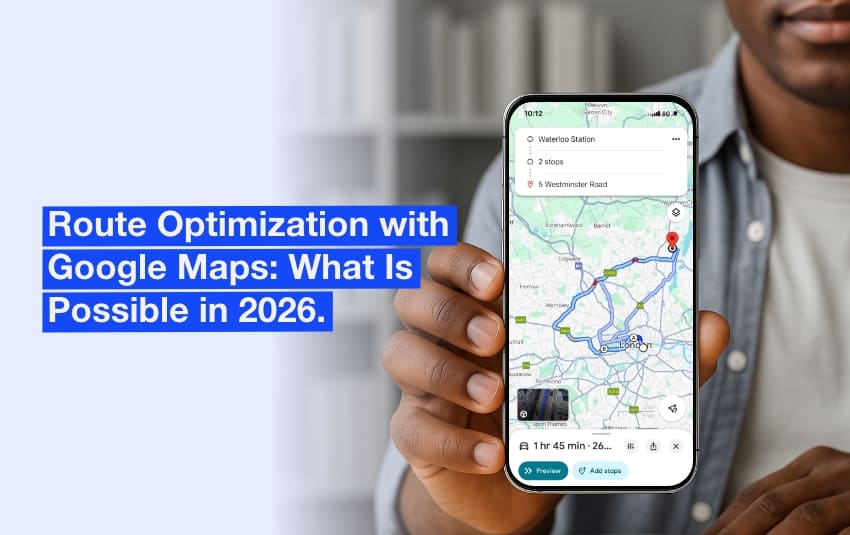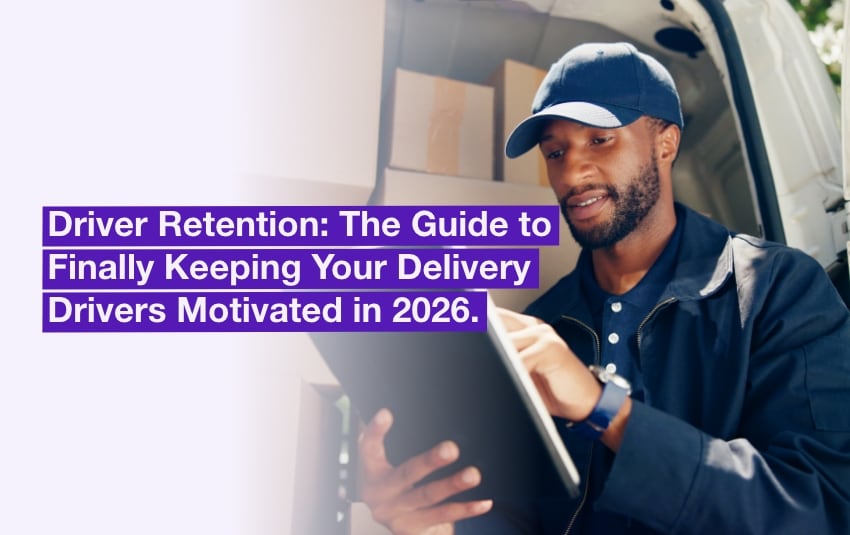Caterers and restaurants: 5 reasons to plan in-house meal deliveries

Meal delivery at home, boosted by the repeated quarantine periods and curfews, is a trend that is expected to continue.
Nearly half of the French population has already ordered ready-to-eat meals, and these sales continue to grow. According to a study by Food Service Vision, home-delivered meals should even represent 19% of restaurant sales in 2024, compared to only 7% in 2019.
Many caterers and restaurant owners who are now starting out on this path are wondering how to plan their in-house deliveries. AntsRoute takes a look at 5 key factors: flow management, communication, quality of the customer experience, definition of the catchment area… and of course, the final profitability of the service.
Table of contents
- Manage the different order flows
- Communicate in real time with customers, from the order to the delivery
- Control the quality of the customer experience from A to Z
- Define the target customers and delivery areas
- In-house meal delivery planning can be much more cost-effective
Caterers and restaurateurs can now plan meal deliveries in-house. For these professionals, it’s a guarantee of customer loyalty. This method also ensures greater profitability.
Manage the different order flows
In order to meet their own business requirements, platforms and aggregators usually require their partner restaurants to make the meal available within 30 minutes. Depending on the layout of your premises and the size of your team, this requirement generates many problems:
- The flow of deliverymen, more or less quiet, can disturb the customers sitting in your establishment.
- When it is all hands on deck, the rush of orders for the platforms could disrupt the work in the kitchen, and therefore lengthen the waiting time in the restaurant.
- The platforms require a validation period before any changes can be made to the restaurant menu. Many professionals are forced to increase their stocks to be sure to complete the orders from the platforms.
In the contrary, planning meal deliveries in-house allows for a much smoother management of the different flows.
For example, you can instantly edit your menus online based on stock levels. You can also freely set your delivery slots, in order to optimize the resources available each day (delivery vehicles and employees). Most caterers and restaurant owners who manage deliveries in-house accept orders up to the day before. This makes supply management much easier, as well as staff organization!
Communicate in real time with customers, from the order to the delivery
Another benefit of scheduling meal deliveries in-house is the ability to communicate with your customers without a middleman. Route optimization software like AntsRoute allows you to send automatically, via email or SMS :
- confirmation of the delivery slot one day before.
- notification when the delivery man is approaching to avoid your customer being stuck at home.
- warning message in case of delay or unforeseen event, without any associated penalty.
- message with a review link to encourage your customers to write positive reviews, etc.
Thanks to this direct communication with consumers, you take control of your brand image. The printing of the vehicles and the deliverymen’s uniforms are essential vectors of your brand, just like the packaging of the products.
You are once again free to set up your commercial policy: targeted marketing operations, custom discount coupons, discounts for subscriptions or frequent deliveries, etc.

AntsRoute links for rescheduling a delivery and tracking a delivery driver.
Control the quality of the customer experience from A to Z
In addition to communication, deciding to plan meal deliveries in-house ensures that consumers receive quality service, from the selection of dishes to the tasting:
- Information updated in real time on the nature, origin or composition of products (identity of the producer, organic label, etc.).
- Pleasant, responsive and well-qualified delivery people.
- Respect of the given time slot.
- Attractive presentation of the various dishes.
- Use of heat packs or relevant reheating tips, etc.
While fast food restaurants are less sensitive to these issues, this is not the case for catering professionals who target more demanding customers.
As chef Julien Mutschler explains, his company “puts everything into offering a complete and reliable delivery service at any time of the day, even on Saturdays. […] The team […] has to respect a strict charter. Going the extra mile without altering the product and preserving its initial flavours, that’s hard work!”
Yet, such quality work is only possible by organizing your food and fresh produce deliveries in-house with efficient optimization software like AntsRoute.

Analysis of AntsRoute statistics on reviews by delivered customers.
Define the target customers and delivery areas
While platforms such as Uber Eats and Deliveroo are very well established in large urban areas, they remain unavailable in small towns and rural areas.
In-house delivery management is therefore an efficient way to reach these less-populated areas… but not less profitable.
In the city as well as in the countryside, several options are possible, depending on your objectives and your commercial policy:
- Deliver your dishes to the usual catchment area of your restaurant or store in order to offer a complementary service to your customers.
- Progressively expand your delivery areas by analyzing the data provided by your optimization software.
- Choose a larger delivery area, in order to reach more out-of-town customers, who might not have come to your establishment, etc.

Optimising meal delivery routes on AntsRoute.
In-house meal delivery planning can be much more cost-effective
The last factor to consider in making the best decision is the profitability of these home meal deliveries.
Basically, outsourcing deliveries via a platform is attractive financially if the number of meals carried remains low. If you are still in the process of testing, or if the food delivery activity is marginal in your turnover, internalizing this service has little chance of being profitable.
Organizing routes in-house generates additional costs that caterers and restaurants must carefully evaluate: communication costs, recruitment and training of employees, purchase and maintenance of vehicles, etc.
To balance these costs, you can expect new revenues and opportunities:
- Your profits increase, as you save the 20-30% in commissions charged by aggregators or platforms.
- You reduce the amount of food thrown away, as you better anticipate your fresh produce needs.
- You attract new customers. Usually younger, home delivery enthusiasts are interested in tasting good food, but are less sensitive to the atmosphere of restaurants.
- You build loyalty with your current customers, who enjoy your kitchen in all circumstances.

Planning meal deliveries in-house is cost-effective.
Cyprien Ripoteau, managing partner of Agapes Traiteur, sums up the benefits of optimizing in-house deliveries:
“The AntsRoute software has been optimizing our daily deliveries for over a year. It saves us time and money! No longer having to worry about organizing our deliveries by ourselves, we can accept more orders. Furthermore, our customers have a precise time of delivery, which leads to more professional services and a complementary offer.”
Over the longer term, the customers of your delivery service remain above all your customers. In the event of a sale or transfer, they become part of your customer file… and therefore contribute to the valuation of your business!
In order to concretely assess the interest of an in-house delivery planning for your establishment, we offer you a 7-day trial of our route optimization software. Go here to take advantage of this free trial without commitment.
Free 7-day trial | No credit card required






